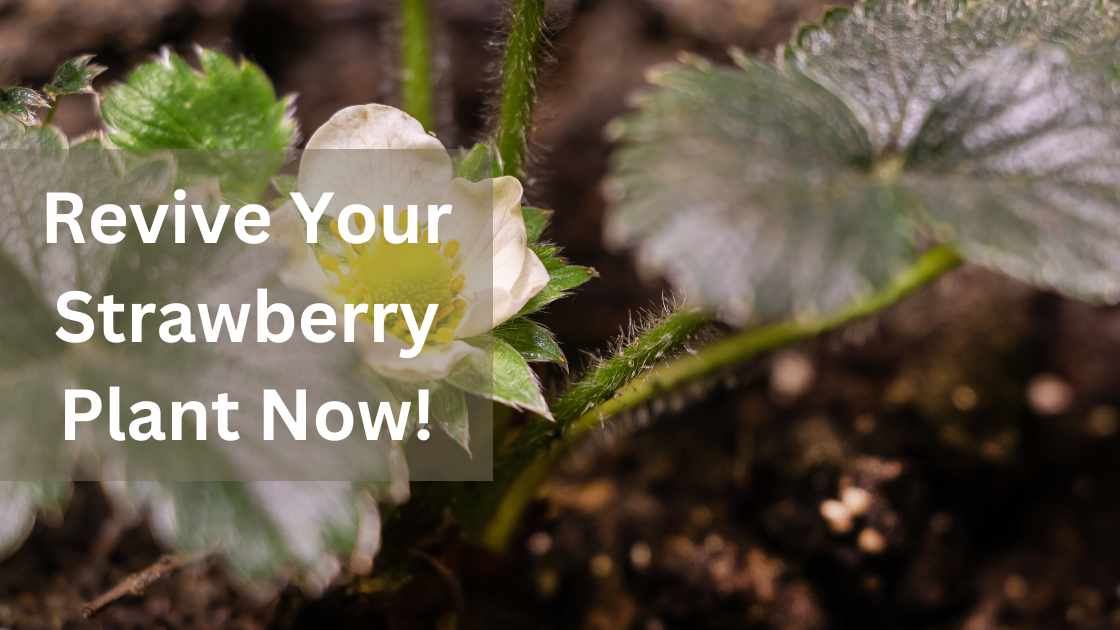Strawberry plants, with their vibrant red berries and sweet flavor, are a delightful addition to any garden. However, when a strawberry plant shows signs of decline, it can be disheartening for gardeners. Fear not – with proper care and attention, it is often possible to revive a dying strawberry plant and bring it back to health. In this article, we will explore essential steps and tips to rescue a struggling strawberry plant.
Reviving a Dying Strawberry Plant: A Gardener’s Guide to Restoration
Assess the Situation
Before taking any action, closely inspect the strawberry plant to identify the specific issues causing its decline. Look for signs of disease, pest infestations, nutrient deficiencies, or overwatering. Understanding the root cause will guide your efforts in providing the necessary care.
Proper Watering
Overwatering is a common issue that can lead to root rot and other problems in strawberry plants. Ensure that the plant is in well-draining soil and adjust your watering routine. Allow the top inch of soil to dry out between waterings and provide a consistent, moderate level of moisture. Avoid waterlogged conditions that can suffocate the roots.
Pruning and Trimming
Trim away any dead or yellowing leaves, as these can harbor diseases and hinder the plant’s overall health. Focus on removing damaged or diseased parts, allowing the plant to direct its energy towards new, healthy growth. Pruning also improves air circulation, reducing the risk of fungal infections.
Nutrient Boost
Provide the strawberry plant with the nutrients it needs for recovery. Apply a balanced, water-soluble fertilizer, rich in nitrogen, phosphorus, and potassium. Follow the recommended dosage on the fertilizer packaging, as over-fertilizing can stress the plant further.
Sunlight Exposure
Ensure that the strawberry plant receives adequate sunlight. These plants thrive in full sun, requiring at least 6-8 hours of direct sunlight daily. If the plant is in a shaded area, consider transplanting it to a sunnier location to promote robust growth and fruit development.
Pest Management
Inspect the plant for pests such as aphids, spider mites, or slugs, as they can contribute to a strawberry plant’s decline. Use organic insecticides or pest control methods to manage infestations, ensuring minimal impact on beneficial pollinators.
Soil Aeration
Compacted soil can impede root development and nutrient absorption. Gently loosen the soil around the plant, improving aeration and drainage. This aids in the recovery process by allowing the roots to access essential oxygen and nutrients.
Mulching
Apply a layer of organic mulch around the base of the strawberry plant to conserve moisture, suppress weeds, and regulate soil temperature. Mulching also protects the roots from extreme temperatures, fostering a healthier environment for recovery.
FAQs
What should I do if my strawberry plant is showing signs of decline?
Start by closely inspecting the plant to identify the root cause, such as disease, pests, or nutrient deficiencies. Once you understand the issue, take targeted actions like proper pruning, adjusting watering habits, and providing necessary nutrients to promote recovery.
Can overwatering be a reason for a dying strawberry plant, and how can I address it?
Yes, overwatering can lead to root rot and other issues. Ensure the strawberry plant is in well-draining soil, and allow the top inch of soil to dry between waterings. Adjust your watering routine to provide consistent, moderate moisture without causing waterlogged conditions.
What role does sunlight play in saving a dying strawberry plant?
Adequate sunlight is crucial for the health of strawberry plants. Ensure they receive at least 6-8 hours of direct sunlight daily. If your plant is in a shaded area, consider transplanting it to a sunnier location to promote robust growth and encourage fruit development.
Final Thought
Saving a dying strawberry plant requires a systematic approach that addresses the root causes of its decline. By assessing the situation, providing appropriate care, and addressing issues such as watering, pruning, and nutrient deficiencies, you can often revive a struggling strawberry plant and set it on the path to vigorous growth and fruitful harvests. Regular monitoring and proactive care will contribute to the plant’s long-term health and vitality in your garden.




